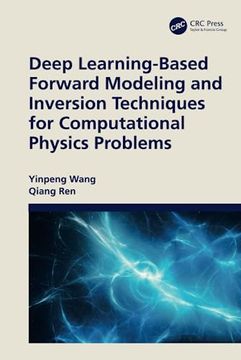Share
Deep Learning-Based Forward Modeling and Inversion Techniques for Computational Physics Problems (in English)
Yinpeng Wang; Qiang Ren (Author)
·
Crc Press
· Hardcover
Deep Learning-Based Forward Modeling and Inversion Techniques for Computational Physics Problems (in English) - Yinpeng Wang; Qiang Ren
$ 94.74
$ 100.00
You save: $ 5.26
Choose the list to add your product or create one New List
✓ Product added successfully to the Wishlist.
Go to My WishlistsIt will be shipped from our warehouse between
Monday, June 24 and
Tuesday, June 25.
You will receive it anywhere in United States between 1 and 3 business days after shipment.
Synopsis "Deep Learning-Based Forward Modeling and Inversion Techniques for Computational Physics Problems (in English)"
This book investigates in detail the emerging deep learning (DL) technique in computational physics, assessing its promising potential to substitute conventional numerical solvers for calculating the fields in real-time. After good training, the proposed architecture can resolve both the forward computing and the inverse retrieve problems. Pursuing a holistic perspective, the book includes the following areas. The first chapter discusses the basic DL frameworks. Then, the steady heat conduction problem is solved by the classical U-net in Chapter 2, involving both the passive and active cases. Afterwards, the sophisticated heat flux on a curved surface is reconstructed by the presented Conv-LSTM, exhibiting high accuracy and efficiency. Besides, the electromagnetic parameters of complex medium such as the permittivity and conductivity are retrieved by a cascaded framework in Chapter 4. Additionally, a physics-informed DL structure along with a nonlinear mapping module are employed to obtain the space/temperature/time-related thermal conductivity via the transient temperature in Chapter 5. Finally, in Chapter 6, a series of the latest advanced frameworks and the corresponding physics applications are introduced.As deep learning techniques are experiencing vigorous development in computational physics, more people desire related reading materials. This book is intended for graduate students, professional practitioners, and researchers who are interested in DL for computational physics.
- 0% (0)
- 0% (0)
- 0% (0)
- 0% (0)
- 0% (0)
All books in our catalog are Original.
The book is written in English.
The binding of this edition is Hardcover.
✓ Producto agregado correctamente al carro, Ir a Pagar.

